Design of UWB Electrically Small Antenna Based on Distributed Passive Network Loading
Abstract
1. Introduction
2. Materials and Methods
3. Fabrication and Measurement Results
4. Conclusions
Author Contributions
Funding
Data Availability Statement
Conflicts of Interest
References
- Kim, O.S.; Breinbjerg, O.; Yaghjian, A.D. Electrically Small Magnetic Dipole Antennas with Quality Factors Approaching the Chu Lower Bound. IEEE Trans. Antennas Propag. 2010, 58, 1898–1906. [Google Scholar] [CrossRef]
- Kim, O.S.; Breinbjerg, O. Lower bound for the radiation Q of electrically small magnetic Dipole antennas with solid magneto dielectric core. IEEE Trans. Antennas Propag. 2011, 59, 679–681. [Google Scholar] [CrossRef]
- Wang, Y.Y.; Yang, S. Design of an Electrically Small 3-D Antenna with Quasi-Isotropic Radiation Pattern. IEEE Antennas Wirel. Propag. Lett. 2021, 20, 1873. [Google Scholar] [CrossRef]
- Sonapreetha, M.R.; Geonyeong, S.; Wonkyo, K.; Syed, I.H.S.; Yoon, I.J. Design and Verification of an Electrically Small, Extremely Thin Dual-Band Quasi-Isotropic Antenna. IEEE Antennas Wirel. Propag. Lett. 2020, 19, 2482. [Google Scholar]
- Kawamura, T.; Matsushita, T.; Kondo, T.; Takeuchi, F.; Hongo, K. Formulae for the Impedance and Transmission Factor of an Electrically Small Half-Sheath Dipole Antenna Immersed in Seawater. IEEE Antennas Wirel. Propag. Lett. 2022, 21, 640. [Google Scholar] [CrossRef]
- Tang, M.C.; Wu, Z.T.; Shi, T. Dual-Band, Linearly Polarized, Electrically Small Huygens Dipole Antennas. IEEE Trans. Antennas Propag. 2019, 67, 640. [Google Scholar] [CrossRef]
- Narbudowicz, A.; Zandamela, A.; Marchetti, N. Energy-Efficient Dynamic Directional Modulation with Electrically Small Antennas. IEEE Antennas Wirel. Propag. Lett. 2022, 21, 681. [Google Scholar] [CrossRef]
- Hiroshi, U.; Nobuki, H.; Hiromichi, Y. Artificial Magnetic Conductor with Electric Walls and Its Application to Small Antenna Functional on Metal Surfaces. IEEE Trans. Antennas Propag. 2021, 69, 5315. [Google Scholar]
- Chen, Z.; Hu, W.; Gao, Y.C.; Wen, L.H.; Li, C.J.; Hu, Z.P.; Jiang, W.; Gao, S. Compact Wideband Circularly Polarized Loop Antenna Based on Dual Common and Differential Modes. IEEE Antennas Wirel. Propag. Lett. 2022, 21, 1567. [Google Scholar] [CrossRef]
- Lee, S.H.; Shin, G.; Sonapreetha, M.R.; Choi, J.Y.; Yoon, I.J. Low-Profile, Electrically Small Planar Huygens Source Antenna with an Endfire Radiation Characteristic. IEEE Antennas Wirel. Propag. Lett. 2019, 18, 412. [Google Scholar] [CrossRef]
- Bush, J.D.; Arumugam, D.D.; Feyissa, B. Counter-Wound Normal-Mode Helical Antenna as an Electrically Small Electro-Quasi-Static Exciter. IEEE Antennas Wirel. Propag. Lett. 2020, 19, 287. [Google Scholar] [CrossRef]
- Yang, Y.; Gong, Y.B.; Guo, K. Broad-Band Multiple OAMs’ Generation with Eight-Arm Archimedean Spiral Antenna (ASA). IEEE Access 2020, 8, 53232. [Google Scholar] [CrossRef]
- Mehrab, R.; Ali, K.; Xiao, F. An Ultra-Miniaturized High Efficiency Implanted Spiral Antenna for Leadless Cardiac Pacemakers. IEEE Trans. Biomed. Circuits Syst. 2023, 17, 621–632. [Google Scholar]
- Podilchak, S.K.; Murdoch, A.P.; Antar, Y.M.M. Compact, Microstrip-Based Folded Shorted Patches: PCB antennas for use on microsatellites. IEEE Trans. Antennas Propag. Magn. 2017, 59, 88–95. [Google Scholar] [CrossRef]
- Cai, X.; Sarabandi, K. A Compact Broadband Horizontally Polarized Omnidirectional Antenna Using Planar Folded Dipole Elements. IEEE Trans. Antennas Propag. 2016, 64, 414–422. [Google Scholar] [CrossRef]
- Lee, S.R.; Lim, E.H.; Rahim, S.K.A. Small Wideband Antenna for On-Metal UHF RFID Tag Design. IEEE J. Radio Freq. Identif. 2022, 6, 121. [Google Scholar] [CrossRef]
- Thirappa, K.; Lim, E.H.; Bon, F.L. Compact Folded-Patch with Orthogonal Tuning Slots for On-Metal Tag Design. IEEE Trans. Antennas Propag. 2019, 67, 5833. [Google Scholar] [CrossRef]
- Liu, X.Y.; Zhu, Y.Z.; Xie, W.X. Miniaturized Ultrawideband Circularly Polarized Antenna with Folded Arms Inspired by the Conventional Vivaldi Antenna. IEEE Trans. Antennas Propag. 2023, 22, 2768. [Google Scholar] [CrossRef]
- Brocker, D.E.; Jiang, Z.H.; Gregory, M.D.; Werner, D.H. Miniaturized Dual-Band Folded Patch Antenna with Independent Band Control Utilizing an Interdigitated Slot Loading. IEEE Trans. Antennas Propag. 2017, 65, 380–384. [Google Scholar] [CrossRef]
- SHAH, S.M.A.; ZADA, M. Electrically-Small Antenna with Low SAR for Scalp and Deep Tissue Biomedical Devices. IEEE Access 2022, 2, 90971. [Google Scholar] [CrossRef]
- Liu, N.W.; Zhu, L.; Liu, Z.X.; Li, M.; Fu, G.; Liu, Y. A Novel Low-Profile Circularly Polarized Diversity Patch Antenna with Extremely Small Spacing, Reduced Size, and Low Mutual Coupling. IEEE Trans. Antennas Propag. 2022, 70, 135. [Google Scholar] [CrossRef]
- Wu, B.; Sun, X.Y.; Zu, H.R.; Zhang, H.H.; Su, T. Transparent Ultrawideband Halved Coplanar Vivaldi Antenna with Metal Mesh Film. IEEE Antennas Wirel. Propag. Lett. 2022, 21, 2532. [Google Scholar] [CrossRef]
- Orazi, H.; Soleiman, H. Miniaturisation of UWB triangular slot antenna by the use of DRAF. IET Microw. Antennas Propag. 2017, 11, 450–456. [Google Scholar] [CrossRef]
- Ananya, M.; Mandal, S.K.; Rowdra, G. A Fractal-Based Time-Modulated Multiband Linear Array for Interband Communication. IEEE Antennas Wirel. Propag. Lett. 2022, 21, 918–922. [Google Scholar]
- Liu, X.; Di, Y.; Liu, H.; Wu, Z.; Tentzeris, M.M. A Planar Windmill-Like Broadband Antenna Equipped with Artificial Magnetic Conductor for Off-Body Communications. IEEE Antennas Wirel. Propag. Lett. 2016, 15, 64–67. [Google Scholar] [CrossRef]
- Zhang, S.; Yang, X.S.; Chen, C.J.; Wang, B.Z. Miniaturized Wideband ±45° Dual-Polarized Metasurface Antenna by Loading Quasi-Fractal Slot. IEEE Antennas Wirel. Propag. Lett. 2023, 22, 893–897. [Google Scholar] [CrossRef]
- Peng, L.; Sun, K.; Jiang, X.; Li, S.M.; Ruan, C.L. EZR-MZR Resonators for Compact Low-Profile Omnidirectional Circular-Polarized Antenna Design. IEEE Photon. J. 2017, 9, 1–15. [Google Scholar] [CrossRef]
- Chen, D.X.; Yang, W.C.; Che, W.Q.; Xue, Q. Miniaturized Wideband Metasurface Antennas Using Cross-Layer Capacitive Loading. IEEE Antennas Wirel. Propag. Lett. 2022, 21, 19. [Google Scholar] [CrossRef]
- Wang, D.; Wong, H.; Chan, C.H. Small patch antennas incorporated with a substrate integrated irregular ground. IEEE Trans. Antennas Propag. 2012, 60, 3096–3103. [Google Scholar] [CrossRef]
- Wagner, S.; Pham, A.V. The Ultrawideband Elliptical Resistively Loaded Vee Dipole. IEEE Trans. Antennas Propag. 2020, 68, 2523–2530. [Google Scholar] [CrossRef]
- Chen, Z.J.; Song, W.; Wu, G.B.; Liu, H.W. Circular Polarized 3-D-Printed Dielectric Loaded Antenna Using Inset Waveguide-to-Dielectric Transition for 5G Millimeter-Wave Application. IEEE Antennas Wirel. Propag. Lett. 2020, 19, 1929–1932. [Google Scholar] [CrossRef]
- Cheng, W.; Dong, Y.D. Wideband Beam-Switchable Antenna Loaded with Dielectric Slab for 5G Applications. IEEE Antennas Wirel. Propag. Lett. 2021, 20, 1557–1561. [Google Scholar] [CrossRef]
- Lamkaddem, A.; Ahmed, E.Y.; Abdalmalak, K.A. Circularly Polarized Miniaturized Implantable Antenna for Leadless Pacemaker Devices. IEEE Trans. Antennas Propag. 2022, 70, 6423. [Google Scholar] [CrossRef]
- Dey, S.; Mittra, R. Compact microstrip patch antenna. Microw. Opt. Technol. Lett. 2015, 13, 12–14. [Google Scholar] [CrossRef]
- Sudhir, B.; Mohammad, G.S.; Sarthak, S. Miniaturized Circularly Polarized Vicsekcross-Shaped Slot Antenna for UHF-RFID Reader Handset Applications. IEEE J. Radio Freq. Identif. 2022, 6, 515–523. [Google Scholar]
- Duan, Y.L.; Tang, M.C.; Wu, Z.T. Omnidirectional-Radiating, Vertically Polarized, Wideband, Electrically Small Filtenna. IEEE Trans. Circuits Syst. II Express Briefs 2023, 70, 1380. [Google Scholar] [CrossRef]
- Zhang, X.; Zhong, Z.P.; Zeng, Q.Y. Principle and Unified Design of Circularly Polarized Quadruple Inverted-F Antenna with Miniaturized Size and Enhanced Front-to-Back Ratio. IEEE Trans. Antennas Propag. 2022, 70, 7735. [Google Scholar] [CrossRef]
- Shi, T.; Wen, Y.S.; Wang, H.B. Low-Profile, Pattern-Reconfigurable, Electrically Small Antenna Based on Equivalent Even and Odd Modes. IEEE Antennas Wirel. Propag. Lett. 2024, 23, 304. [Google Scholar] [CrossRef]
- Chen, X.M.; Tang, M.C.; Yi, D. Wideband, Electrically Small, Near-Field Resonant Parasitic Dipole Antenna with Stable Radiation Performance. IEEE Antennas Wirel. Propag. Lett. 2020, 19, 826. [Google Scholar] [CrossRef]
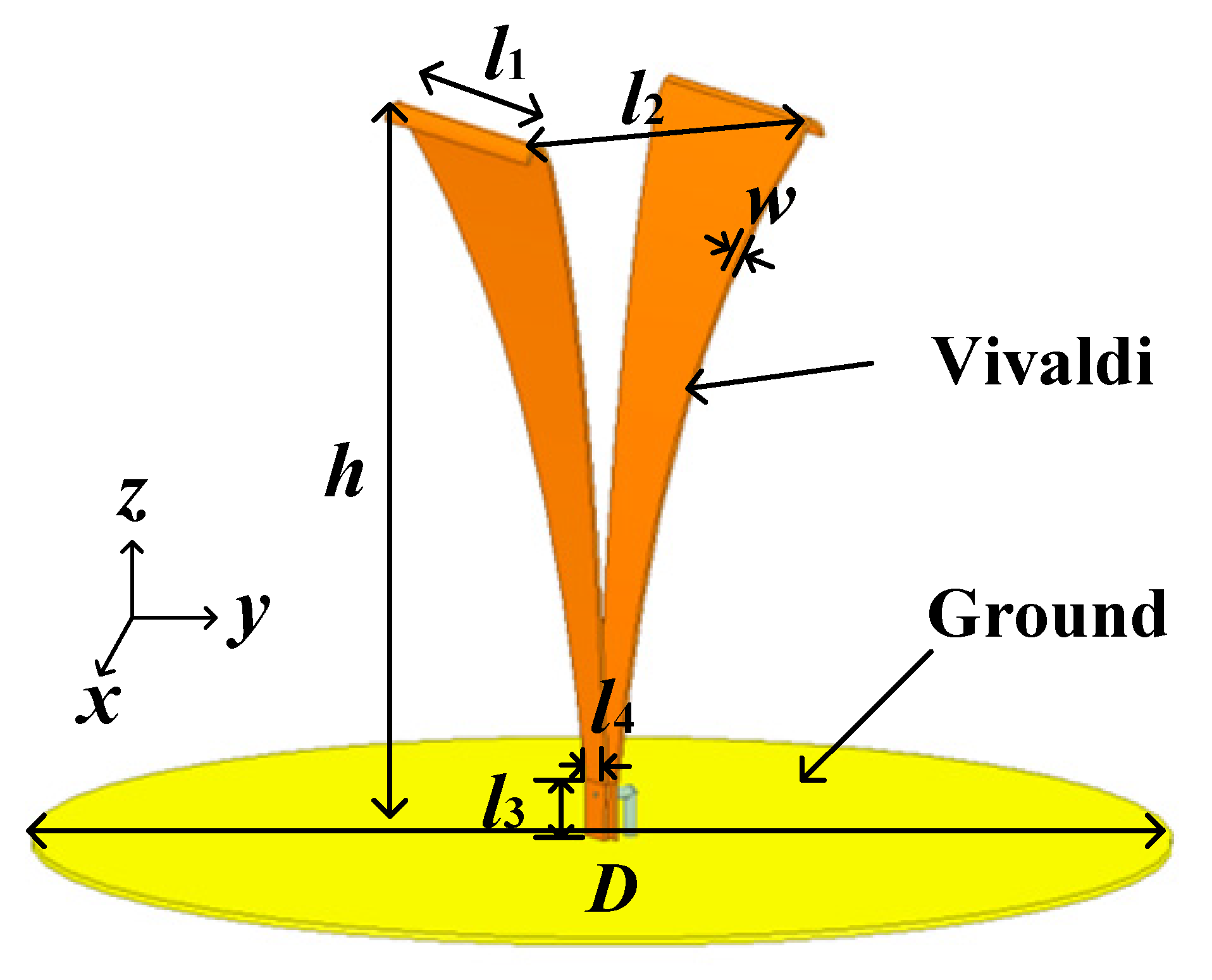
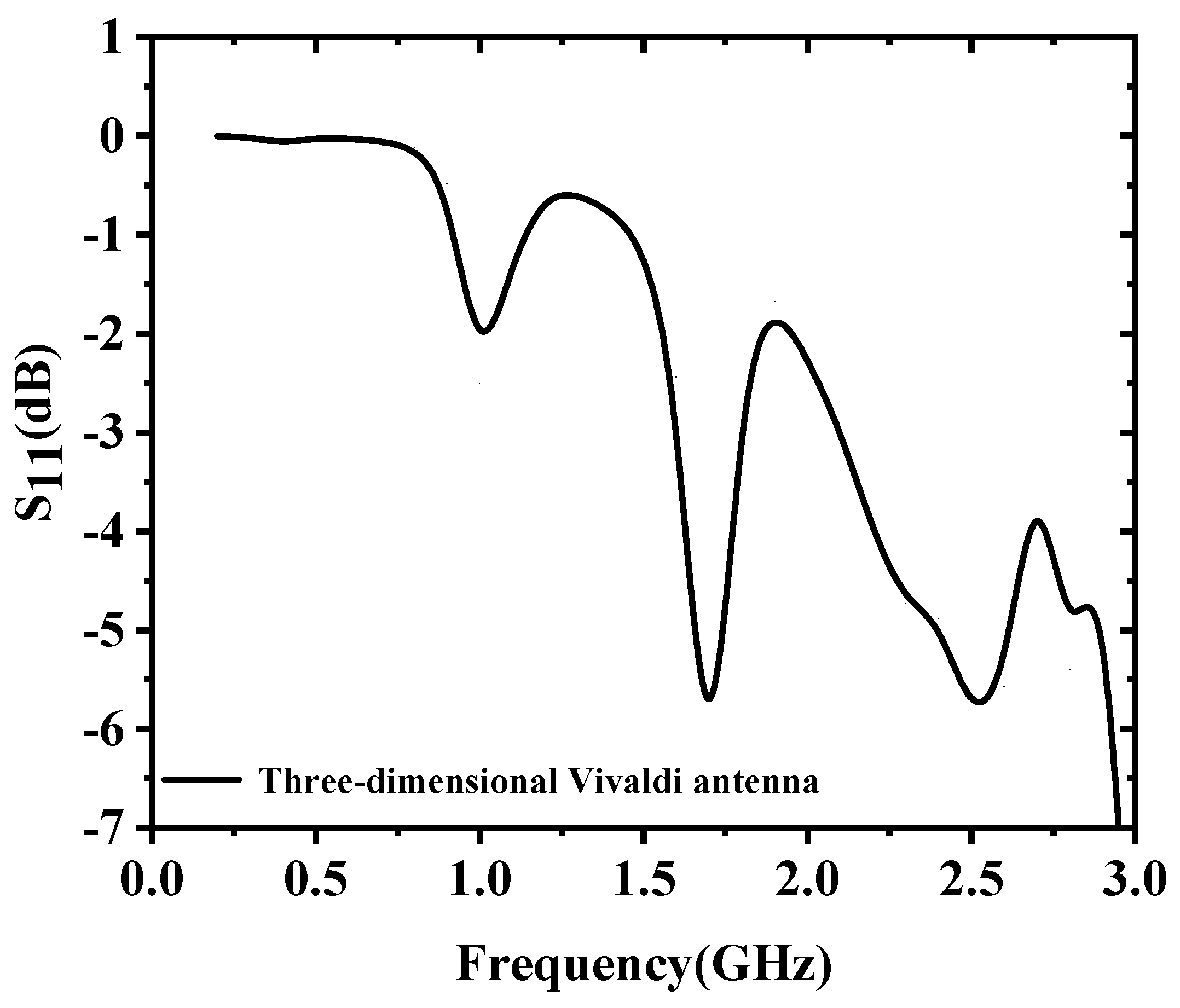
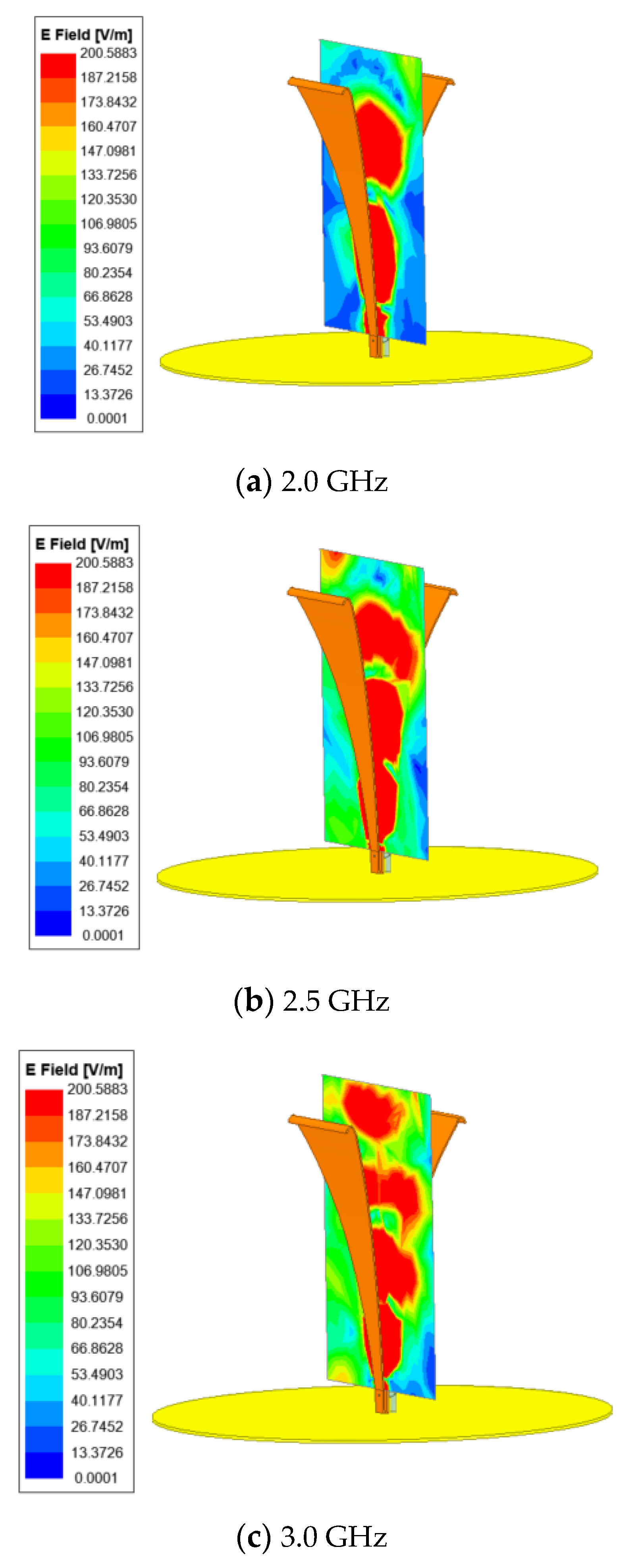
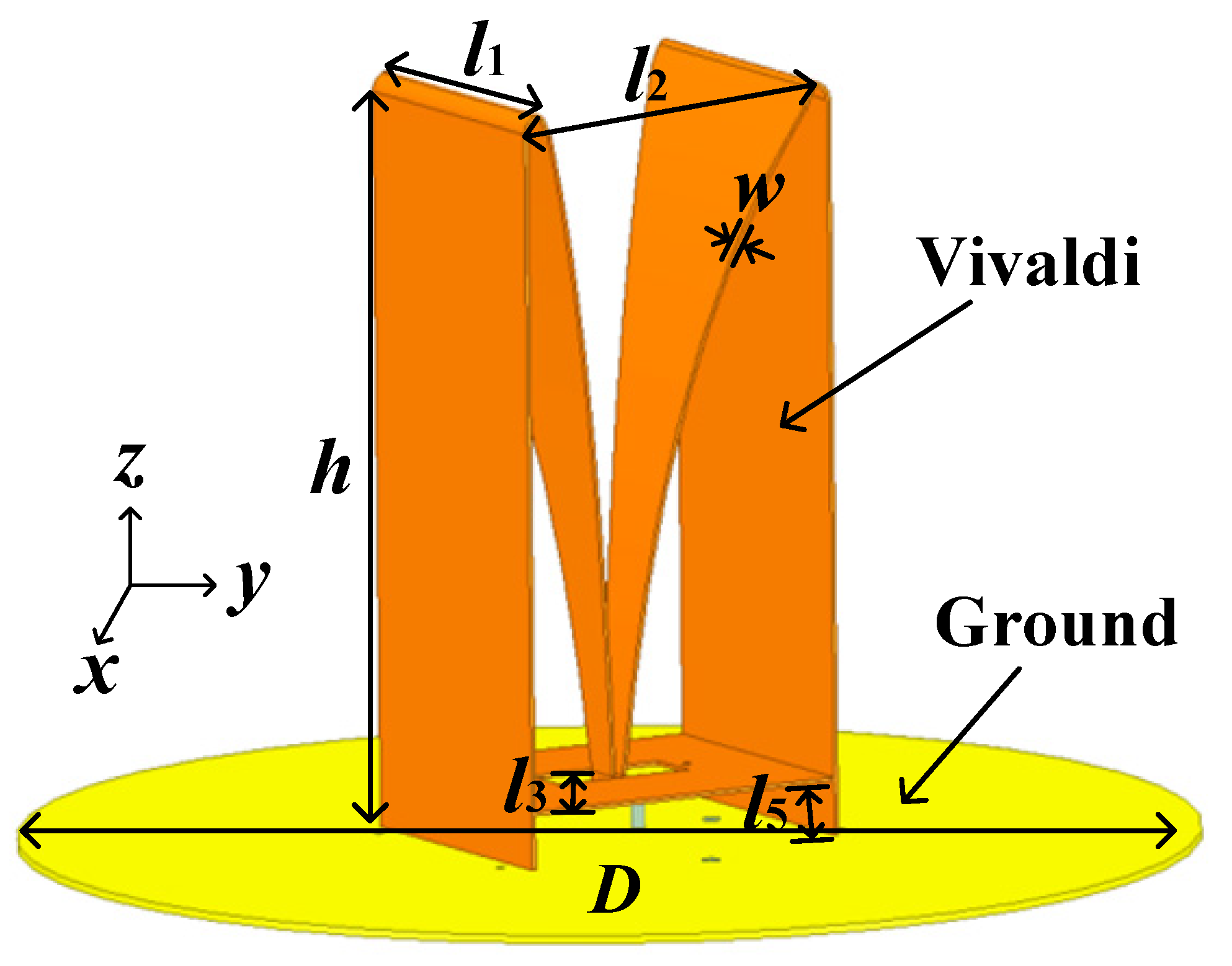

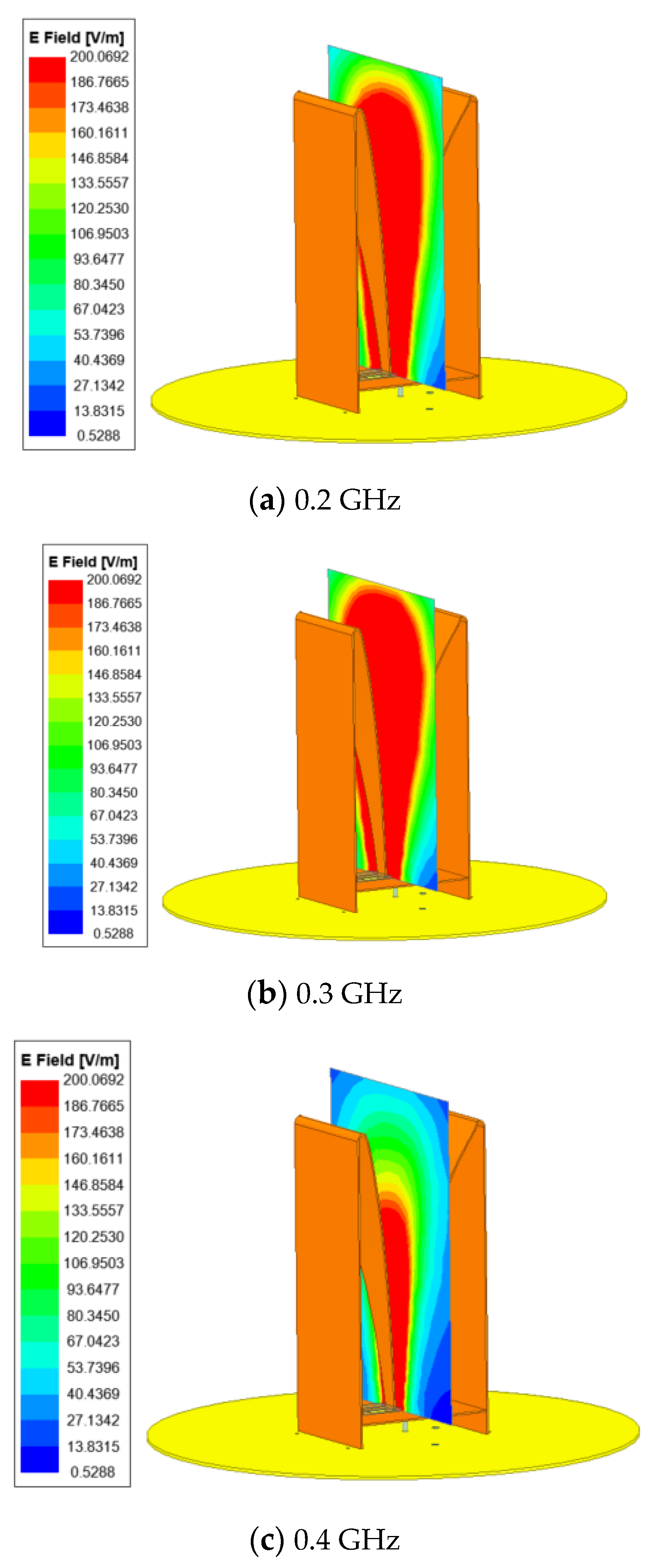
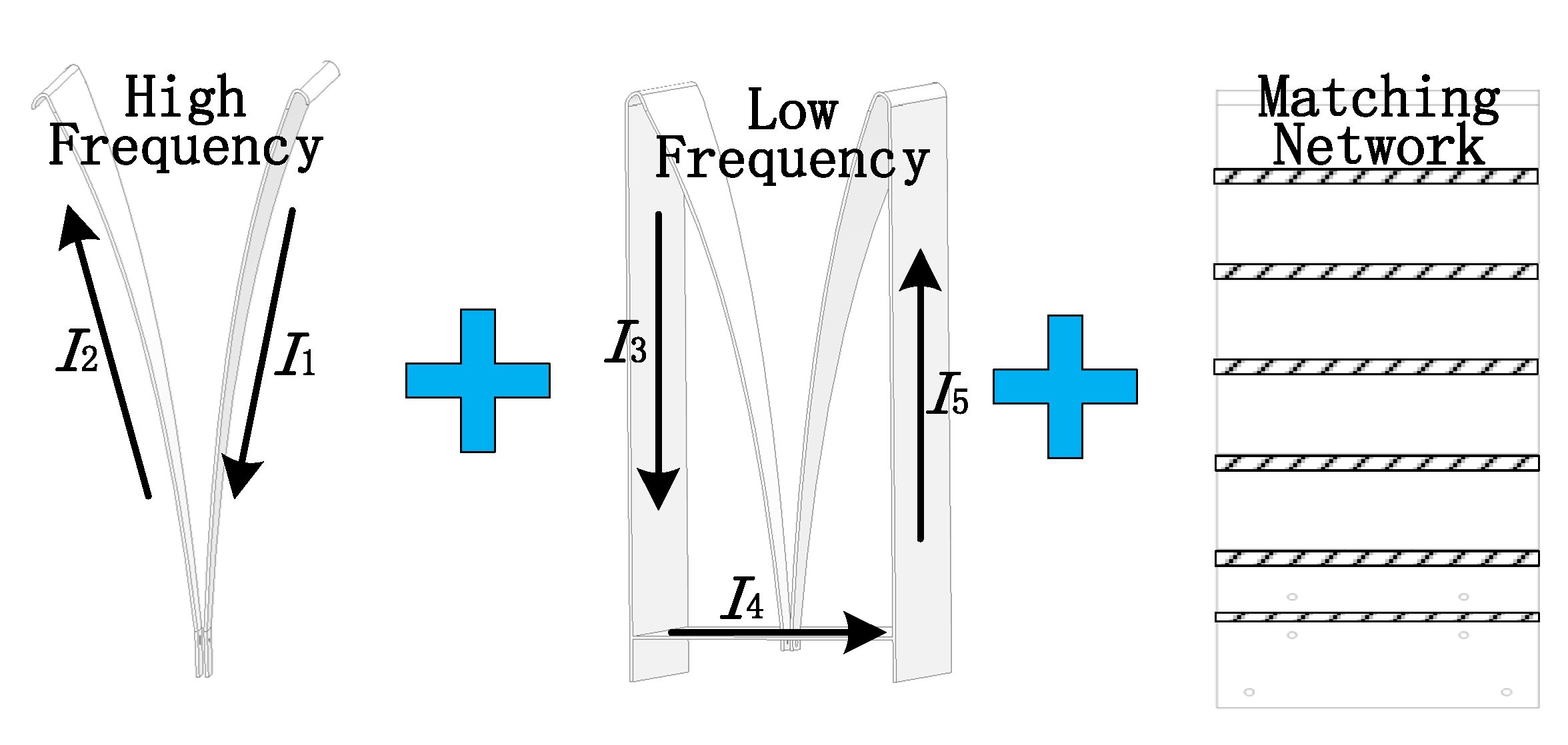
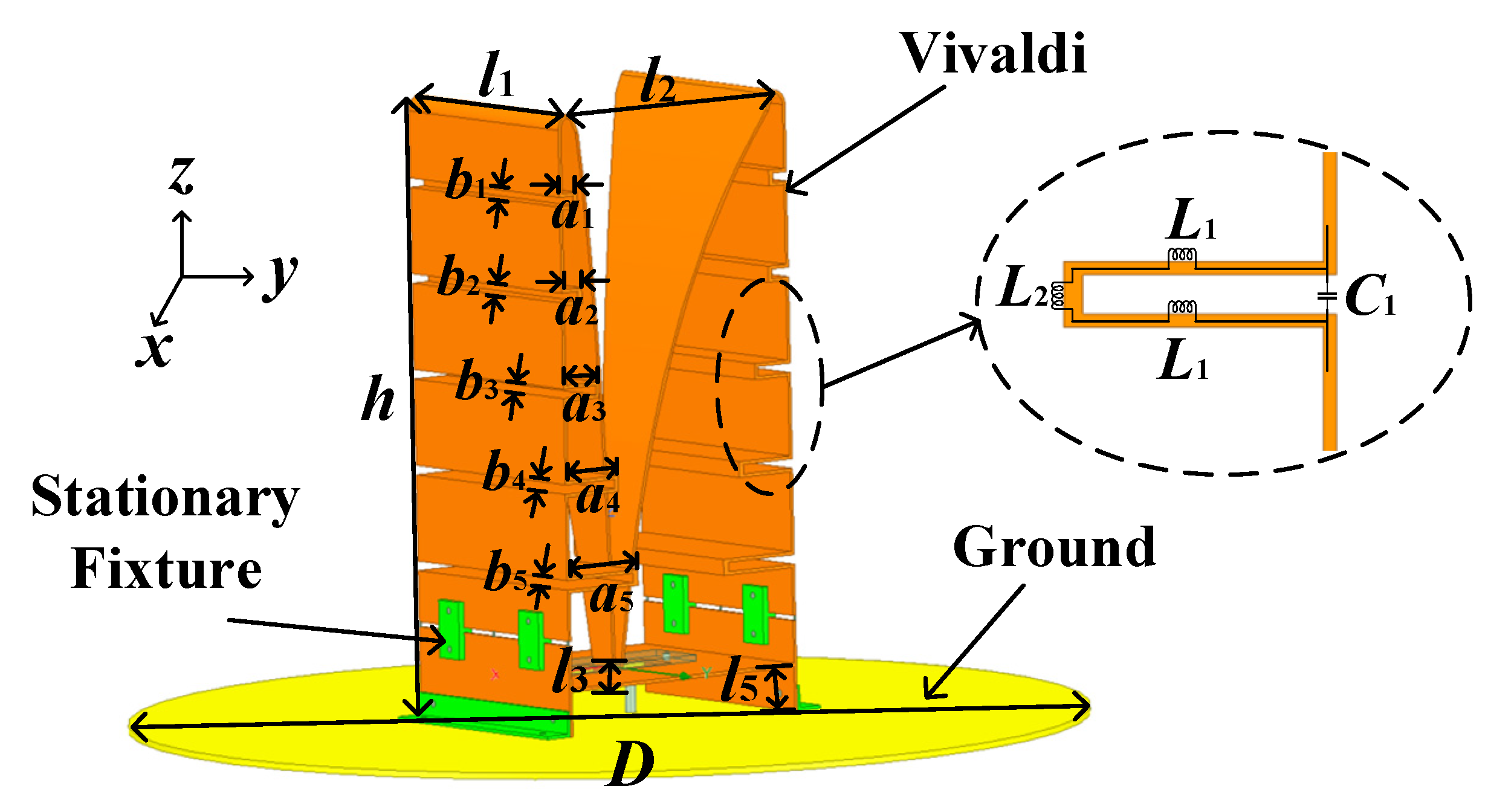
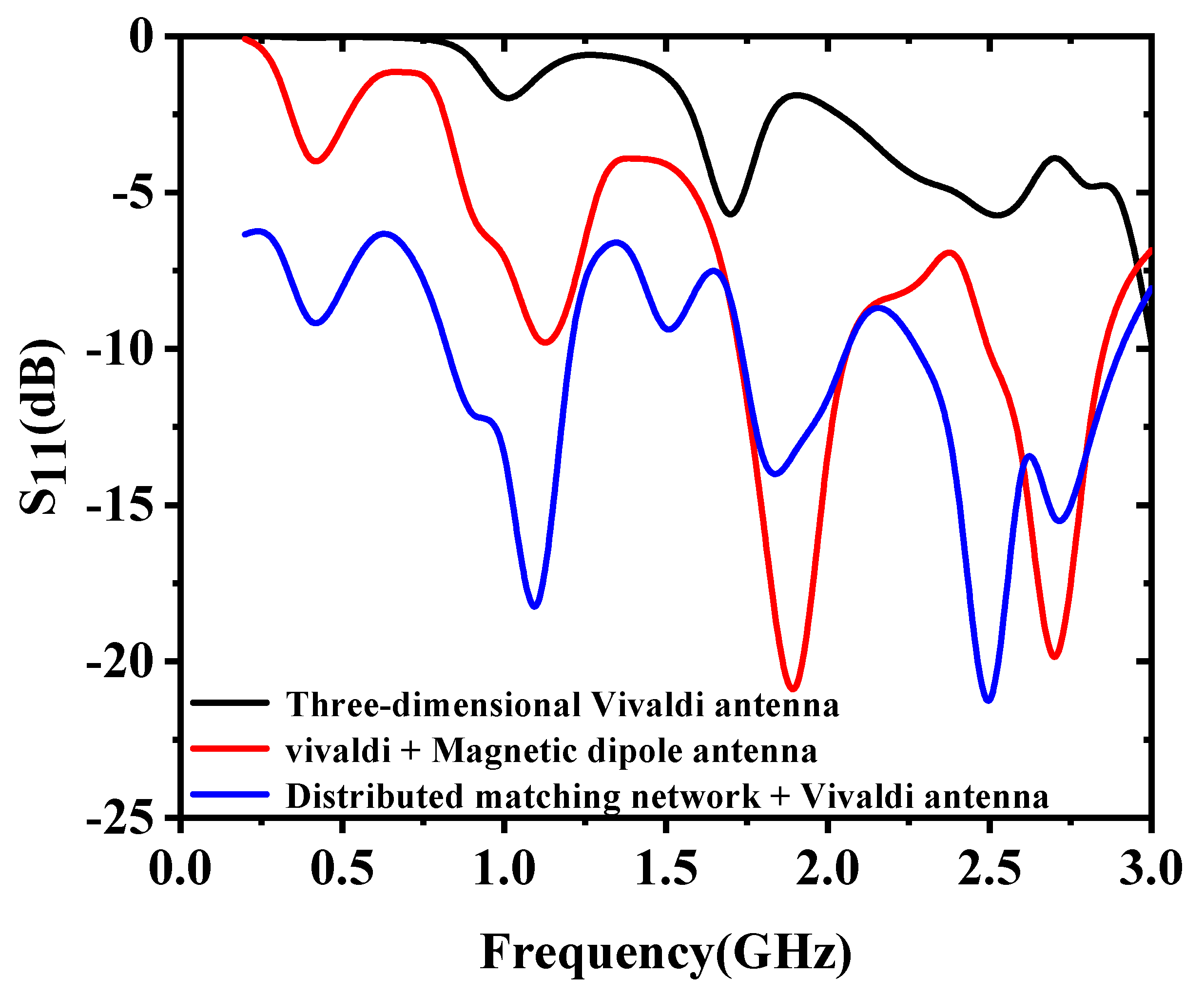
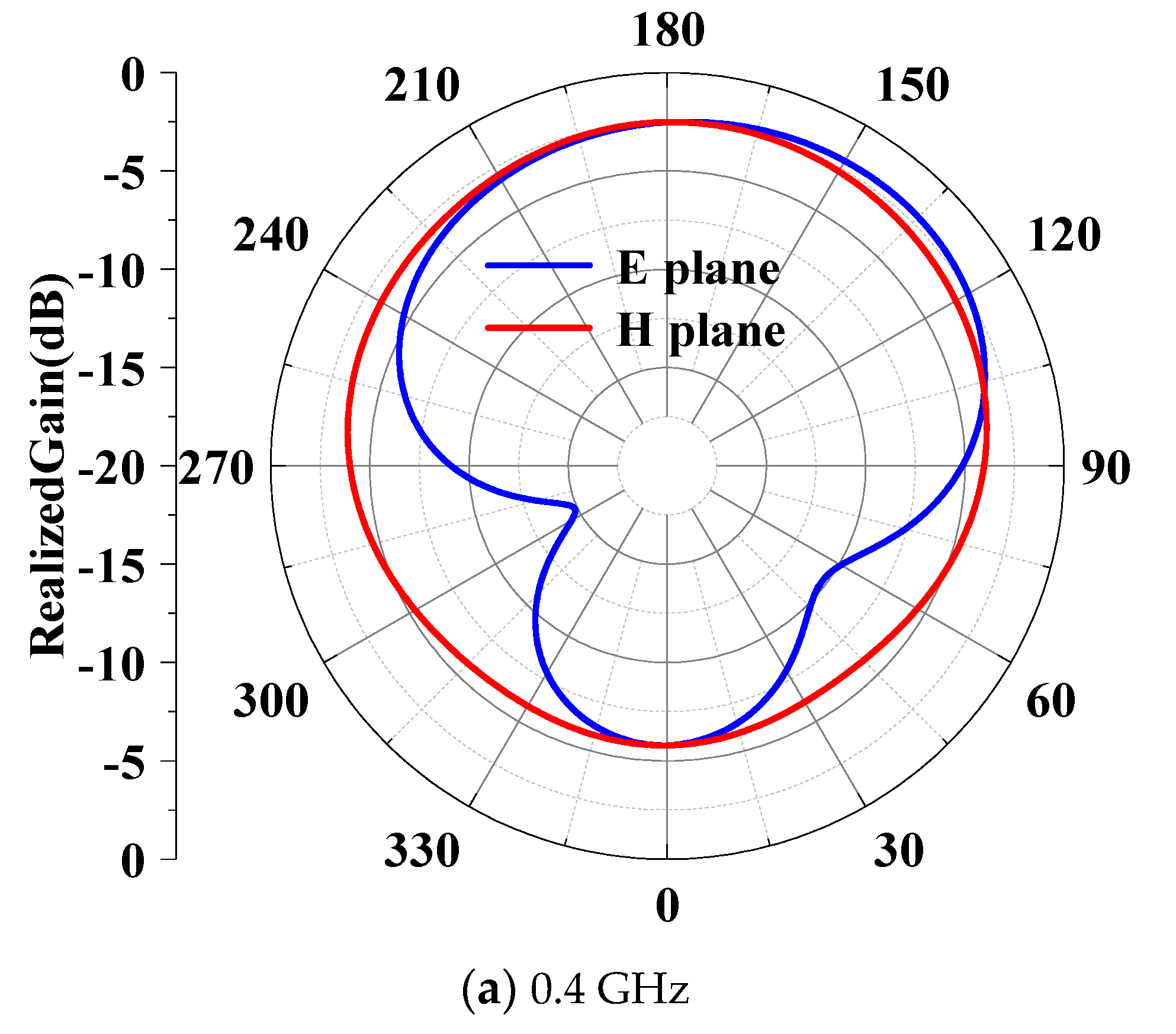

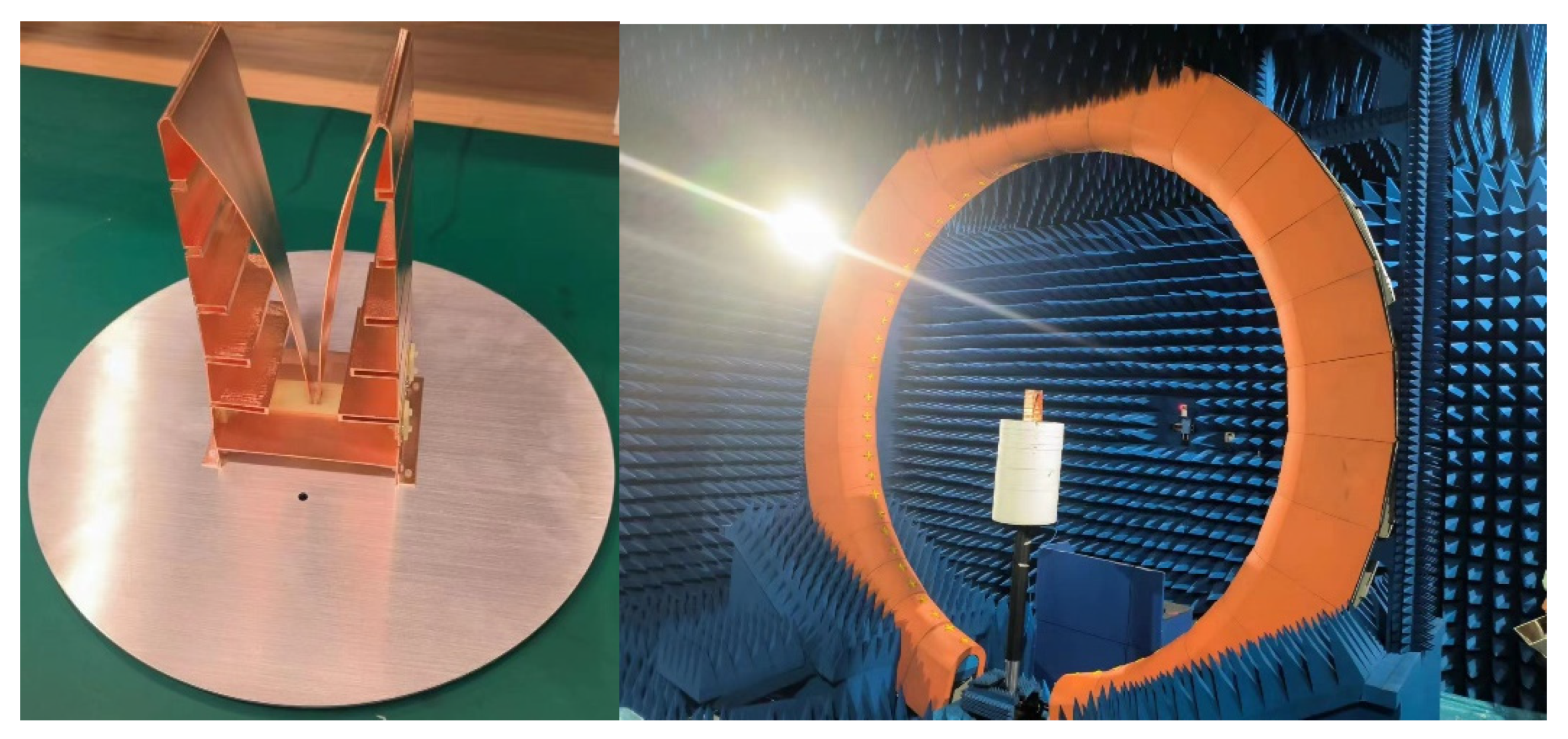
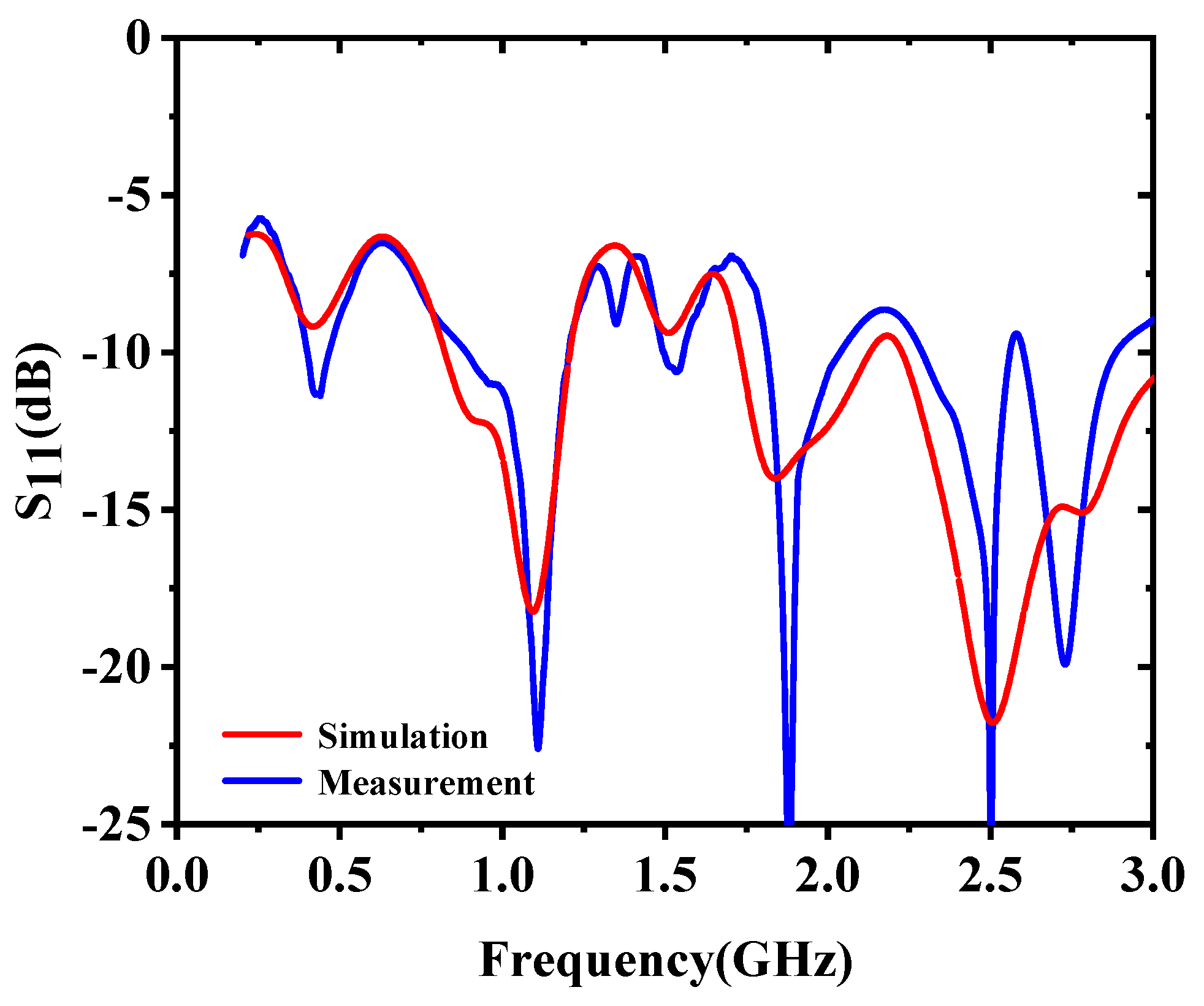


| Ref. | Bandwidth (GHz) | Dimensions/λ03 | Octave | Peak Gain (dBi) |
|---|---|---|---|---|
| [18] | 1–6 | 0.21 × 0.21 × 0.11 | 6 | 3.6 |
| [22] | 0.78–20 | 0.32 × 0.47 × 0.052 | 25.6 | 7.4 |
| [37] | 1.568–1.583 | 0.068 × 0.068 × 0.052 | 1.009 | −2.5 |
| [39] | 3–5.25 | 0.5 × 0.5 × 0.4 | 1.75 | −1.5 |
| This work | 0.2–3 | 0.06 × 0.05 × 0.12 | 15 | 8.3 |
Disclaimer/Publisher’s Note: The statements, opinions and data contained in all publications are solely those of the individual author(s) and contributor(s) and not of MDPI and/or the editor(s). MDPI and/or the editor(s) disclaim responsibility for any injury to people or property resulting from any ideas, methods, instructions or products referred to in the content. |
© 2024 by the authors. Licensee MDPI, Basel, Switzerland. This article is an open access article distributed under the terms and conditions of the Creative Commons Attribution (CC BY) license (https://creativecommons.org/licenses/by/4.0/).
Share and Cite
Chen, Z.; Lin, X.; Luan, Y.; Hao, X.; Yan, X.; Liu, G. Design of UWB Electrically Small Antenna Based on Distributed Passive Network Loading. Electronics 2024, 13, 914. https://doi.org/10.3390/electronics13050914
Chen Z, Lin X, Luan Y, Hao X, Yan X, Liu G. Design of UWB Electrically Small Antenna Based on Distributed Passive Network Loading. Electronics. 2024; 13(5):914. https://doi.org/10.3390/electronics13050914
Chicago/Turabian StyleChen, Zhe, Xianqi Lin, Yuchen Luan, Xinjie Hao, Xiaoming Yan, and Guo Liu. 2024. "Design of UWB Electrically Small Antenna Based on Distributed Passive Network Loading" Electronics 13, no. 5: 914. https://doi.org/10.3390/electronics13050914
APA StyleChen, Z., Lin, X., Luan, Y., Hao, X., Yan, X., & Liu, G. (2024). Design of UWB Electrically Small Antenna Based on Distributed Passive Network Loading. Electronics, 13(5), 914. https://doi.org/10.3390/electronics13050914






